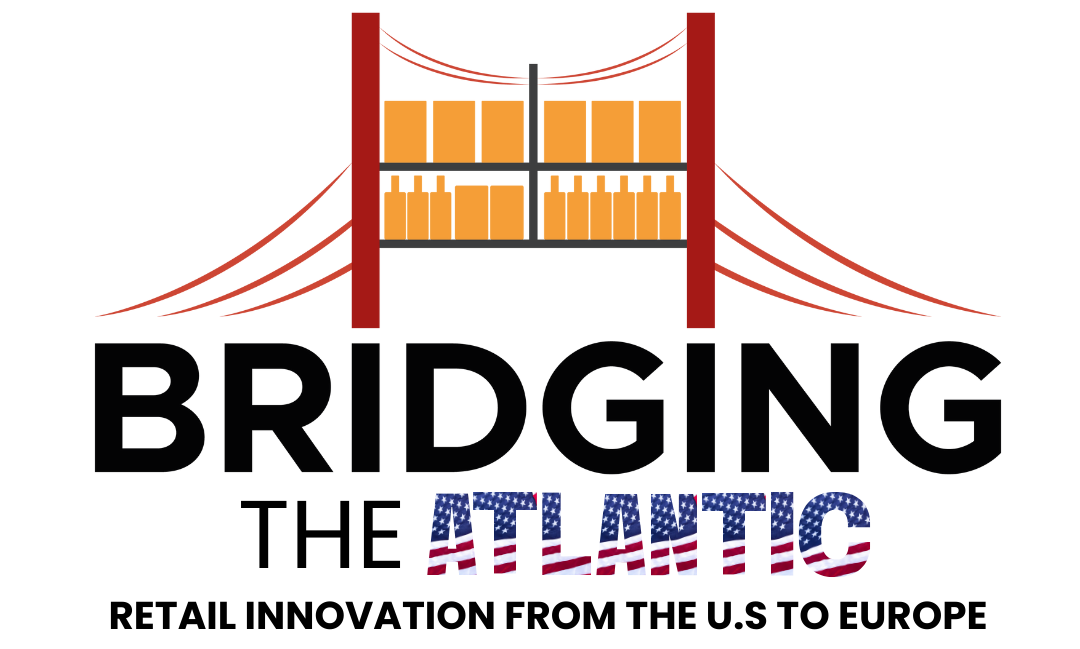
Recently, at Amoobi we hosted « Bridging the Atlantic: Retail Innovation from the U.S to Europe » a special event dedicated to sharing actionable insights from the dynamic US retail market. After spending nine months expanding Amoobi’s presence in the United States, our CEO, Olivier Delangre, returned with a wealth of practical observations on the strategies shaping the world’s largest retail economy.

The event was an interesting discussion led by one retail expert to several others. After his immersion into the US market, not just through the expansion work for Amoobi, but through extensive store visits, Olivier shared a fresh perspective and a first-hand look at what is working for US giants sparking new ideas for improving the shopper experience and fostering innovation in Europe.
The conversation covered several topics and while some strategies may not be directly replicable in Europe, the overarching themes provide powerful inspiration.
Here are some of the key takeaways Olivier shared:
US retailers are part of the community. There is a palpable sense of belonging in the US market. Shoppers often refer to « their » stores, and retailers actively cultivate this connection . Through ingenious marketing campaigns that emphasize local products, they build empathy and community that nurtures fidelity.


Loyalty programs that deliver value and tangible savings. US loyalty programs are straightforward and effective. Often tied simply to a phone number, they focus on clear and immediate benefits which are reflected on the receipt after every purchase or extend to other types of services and products. Retailers also message the « total savings » on every receipt, reinforcing the program’s worth with each transaction.


US retail is about experience. The grocery trip is being elevated to an experience. Stores taken to new levels with imaginative decor (like depicting European streets) in-store bars and live cooking demonstrations. This, combined with novelty aisles, create your own selection and product-specific corners, turns the physical visit into an engaging and memorable activity.




Communication that connects. Humor is a key tool. In-store communication, packaging, and marketing campaigns are filled with puns and wordplay. Retailers use blunt and funny marketing campaigns to create a sense of proximity and build a more approachable and memorable brand personality.



While retailers craft the overall experience, brands play a dominant role in the layout. Merchandising is often organized in « brand blocks » rather than just by product category. It’s common to see brands get dedicated corners or even – almost- entire aisles (as is the case for Coca Cola), fully adopting the « store within a store » concept, giving brands a dominant role in the shopper’s view.




Is all about the shopper. Stores are full of details that facilitate the shopping experience. This ranges from in-store navigation cues, with clear and large signages, to new technologies like smart shopping carts, cleaning robots at store and retail media. While retailers may be slower to adopt some technologies, they are quick to test solutions that visibly improve the purchasing experience.



A constant stream of product innovation. The pace of product launches is impressive. From new formats and « healthier » options to ready-to-cook meal kits, the market rapidly adapts to consumer preferences. The current « protein era, » with brands highlighting macronutrients and launching entire high-protein lines, is a perfect example of the market’s speed in responding to consumer trends..



This isn’t to say the US market is ahead in all aspects. Europe leads in areas like electronic shelf label (ESL) adoption and a much stricter legislation on drugstore products and competition between brands. However even as e-commerce captures over 16% of total US retail sales (a figure set to exceed 20% by 2027), according to the U.S. Census Bureau, American retailers are boldly investing in their physical footprint.
Why? They are following the consumer. So far in 2025, the majority of retail sales came from physical stores (83.7%) and to the date 45% of US consumers still primarily shopping in brick-and-mortar stores, 27% regularly shopping both online and in-store, and new generations (Z) are opting to return to the physical shopping experience, the data* is clear: the store is far from dead, and physical stores have an enduring power.
Whether or not every US strategy can be replicated in Europe, Olivier’s immersion provided a fresh, practical perspective on a market that refuses to stand still. It highlights the massive, evolving opportunities that continue to exist for the physical store and provide a valuable benchmark for anyone looking to innovate the European shopper experience.
To watch the complete « Bridging the Atlantic: Retail Innovation from the U.S to Europe » conference, [Click here]
Want to see the pictures of the event? [Click here]
*Data source: October 2025, Report, Capital One Shopping. Online vs In-Store Shopping Statistics.